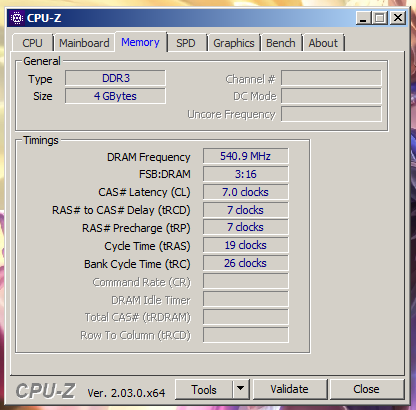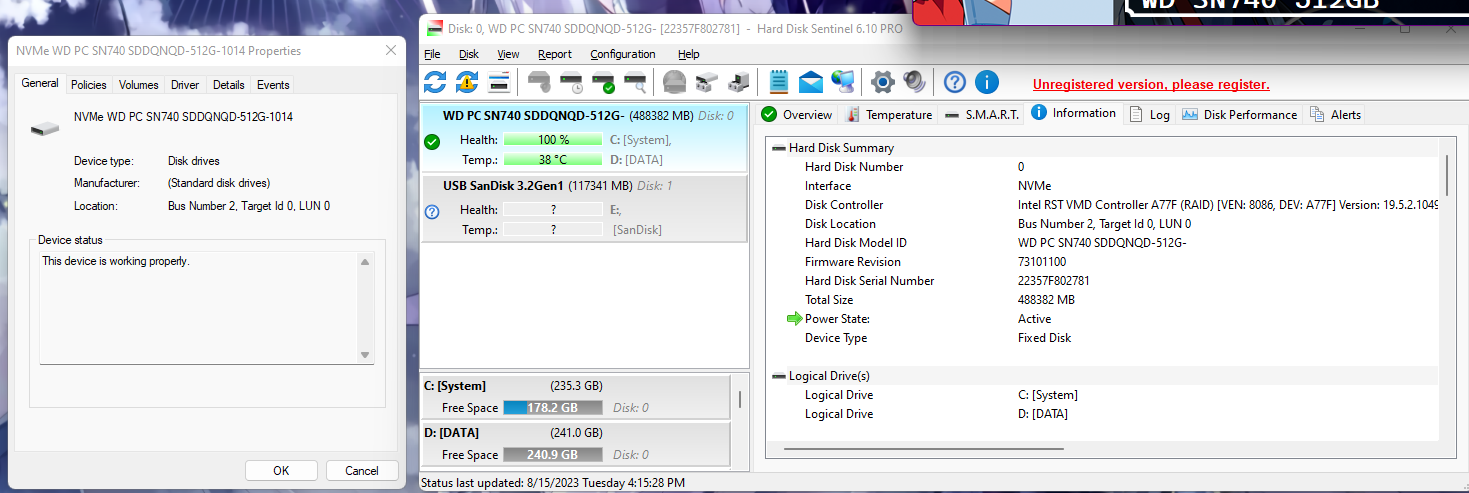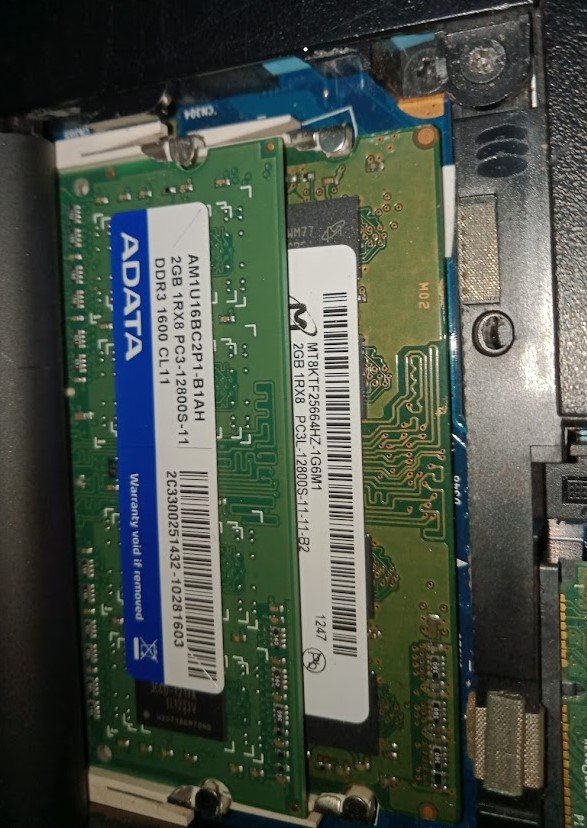Comparing: DDR3 SODIMM 1066MHz [Disk] vs Western Digital PC SN740 512GB
In this comparison, we analyze two Disks: DDR3 SODIMM 1066MHz [Disk] and Western Digital PC SN740 512GB, using synthetic benchmark tests to evaluate their overall performance. This side-by-side comparison helps users understand which hardware delivers better value, speed, and efficiency based on standardized testing. Whether you're building a new system or upgrading an existing one, this benchmark-driven evaluation offers valuable insights to guide your decision.

DDR3 SODIMM 1066MHz [Disk]
| Type: | Disks |
|---|---|
| Model: | DDR3 SODIMM 1066MHz [Disk] |
| Capacity: | 2GB |
| Interface: | DDR3 |

Western Digital PC SN740 512GB
| Type: | Disks |
|---|---|
| Model: | PC SN740 512GB |
| Capacity: | 512GB |
| Interface: | PCIe 4.0 x4 |
Specification Comparison Table
This specification comparison presents technical details of several devices or components to help you understand the key differences between each option. Use this table as a reference to determine which device best suits your needs.
| Specification | DDR3 SODIMM 1066MHz [Disk] | Western Digital PC SN740 512GB |
|---|---|---|
| Brand | - | Western Digital |
| Format | RAM Disk | SSD M.2 NVMe 2280 |
| Capacity | 2GB | 512GB |
| Interface | DDR3 | PCIe 4.0 x4 |
Submission Comparison Table
This submission comparison table displays the number and details of benchmark data submissions from various devices or components. This information helps you understand the performance based on the benchmarks that have been tested, as well as providing an overview of the consistency and popularity of the available benchmark results.
| No. | Benchmark Software | DDR3 SODIMM 1066MHz [Disk] | Western Digital PC SN740 512GB |
|---|---|---|---|
| 1 | ATTO Disk Benchmark - 64M |
Read: 1020.00 MB/s Write: 1080.00 MB/s |
Read: 4720.00 MB/s Write: 3670.00 MB/s |
| 2 | Cross Platform Disk Test |
Read: 658.01 MB/s Write: 265.28 MB/s |
Read: 3410.00 MB/s Write: 1550.00 MB/s |
| 3 | CrystalDiskMark |
Read: 746.24 MB/s Write: 828.18 MB/s |
Read: 3913.58 MB/s Write: 3453.18 MB/s |
Submission Comparison Chart
This chart visualizes the benchmark scores comparison between two hardware devices based on submitted data.
Media Gallery
A collection of photos of tested hardware. These images can help you identify the physical form, model, and variant of the hardware in question. These photos are from our own documentation, and if they are not available we may not be able to document them.
About Hardware DDR3 SODIMM 1066MHz [Disk]
DDR3 SODIMM 1066MHz is a third-generation memory module with a speed of 1066MHz that is commonly used in laptops and small devices. With the SODIMM form factor, these modules are often the standard choice for mobile computing systems, serving as the main memory for running operating systems, applications, and light to medium multitasking processes.
However, in this particular experiment, two 1066MHz DDR3 SODIMM modules from Micron and ADATA (2GB capacity each) were uniquely configured as a RAMDisk, a temporary storage space that uses RAM capacity to simulate a storage drive with much higher access speeds than SSDs or HDDs.
The 1066MHz DDR3 SODIMM-based RAMDisk test was conducted on an HP 1000 1b05au laptop device, powered by an AMD E1-1200 processor. The system is equipped with a 2x2GB DDR3 SODIMM 1600MHz RAM configuration, but due to processor architecture limitations, the memory only runs in single channel mode with an effective speed of 1066MHz. The operating system used is Windows 7, and to create and manage the RAMDisk, two popular applications, SoftPerfect RAMDisk and ImDisk Virtual Disk Driver, were used. The configured RAMDisk size was 2GB, utilizing some of the available RAM capacity.
Even though the device specifications are old and have limited memory bandwidth, the RAMDisk configured in this system was still able to show excellent performance in the read and write speed benchmarks. Based on tests using CrystalDiskMark, the read speed reached 746.24 MB/s, while the write speed touched 828.18 MB/s. In a follow-up test using ATTO Disk Benchmark with a 64MB block size, the read speed increased to 1020.00 MB/s, and the write speed reached 1080.00 MB/s. These results prove that even on older systems, RAMDisk configurations are still capable of delivering very high I/O performance, far surpassing conventional storage such as HDDs or even some SSDs.
Analysis
The results show that a 1066MHz DDR3-based RAMDisk is still capable of delivering data transfer speeds on par with entry-level NVMe SSDs, even outperforming many SATA SSDs and leaving conventional HDDs far behind. This makes RAMDisks an ideal solution for temporary use such as:
- Application caching,
- Temporary file storage,
- Fast computing with high I/O,
- Software or script testing without the risk of contaminating the main file system.
Although limited to a small capacity (2GB in this test), RAMDisk is still very useful for specific needs, especially for users with more than enough RAM or older devices that want to maximize their performance.
Test on:
Device: HP 1000 1b05au
Specs:
CPU: AMD E1-1200
OS: Windows 7
RAM: 2x2GB Single Channel 2 DIMM 1066MHz (Does not support dual channel due to limitations of the CPU, currently running single channel mode and 1066MHz)
Wednesday, 26 December 2012 14:27:32 | Update: 1 month ago
About Hardware Western Digital PC SN740 512GB
The Western Digital PC SN740 is a high-performance NVMe SSD specifically designed to meet the needs of modern computing, especially in ultrabooks, business laptops and other compact devices. It features a PCIe Gen4 x4 interface and NVMe 1.4 protocol, which enables extremely fast read and write speeds, making it an ideal storage solution for intensive multitasking, big data processing, and a responsive and efficient computing experience.
The SN740 comes in various capacities ranging from 256GB, 512GB, 1TB, to 2TB, providing flexibility for users with different storage needs. Built with Western Digital 3D NAND technology, the SSD offers not only high performance, but also excellent power efficiency and long-term durability. Its availability in two form factors, M.2 2230 and M.2 2280, makes it highly compatible with many of the latest devices, including thin laptops and small industrial systems.
In a real-world test using an Acer Aspire 5 A515-58P laptop equipped with an Intel Core i5-1335U processor, 8GB LPDDR5 RAM and running Windows 11 operating system, the SSD ran on PCIe Gen3 x4 mode due to laptop slot limitations. Despite not running at full PCIe Gen4 speed, the benchmark results still showed excellent performance. Tests with CrystalDiskMark recorded read speeds of up to 3913.58 MB/s and write speeds of 3453.18 MB/s, while AS-SSD Benchmark recorded read speeds of 3795.33 MB/s and write speeds of 1879.37 MB/s. These numbers show that even on a PCIe Gen3 interface, the WD SN740 still offers premium performance that can compete with other high-end SSDs.
In addition to performance, the Western Digital SN740 also features enhanced security and power efficiency, making it a great choice for mobile professionals, software developers, and general users who desire fast and durable storage. With the combination of high data transfer speeds, compact design and Western Digital's brand reputation for reliability, this SSD is one of the best-in-class choices for storage upgrades on modern devices.
Device test (testbed):
Device: Acer Aspire 5 A515-58P
NVMe Capacity: 512GB
PCIe: Gen3 x4 (for run this NVMe)
CPU: i5-1335U
RAM: 8GB LPDDR5
OS: Windows 11
Tuesday, 15 August 2023 13:16:33 | Update: 1 month ago


